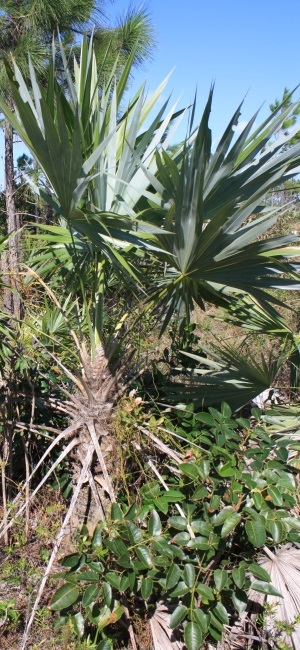
Copyright by: George D. Gann
in habitat, New Providence, Bahamas, 2012
Family: Arecaceae
Group: Monocot
Substrate:
Terrestrial
Habit:
Tree
Perennation:
Perennial
Native Range: South Florida and the West Indies, where scattered.
Map of select IRC data for peninsular Florida
NatureServe Global Status:
Apparently Secure
State of Florida Status:
Threatened
Florida Natural Areas Inventory State Status:
Rare
IRC SOUTH FLORIDA Status:
Rare
SOUTH FLORIDA Occurrence:
Present
SOUTH FLORIDA Native Status:
Native
SOUTH FLORIDA Cultivated Status:
Cultivated
Comments: This is native to the Florida Keys in both Miami-Dade and Monroe counties. One specimen was collected in 1965 on an island off of Flamingo in Florida Bay in Everglades National Park. This record is treated as being from the Monroe County Mainland by the Altlas of Florida Vascular Plants, which we follow here. A juvenile individual was also discovered in 2011 on Cape Sable in Everglades National Park by Marc Minno, ENP botanist Jimi Sadle and others. There are no other records from the South Florida mainland or from offshore barrier islands.
Visit our
Natives For Your Neighborhood website for more information and images. For a digitized image of Elbert Little's Florida range map, visit the
Exploring Florida website.
Synonyms: Thrinax morrisii, T. keyensis, T. microcarpa.
